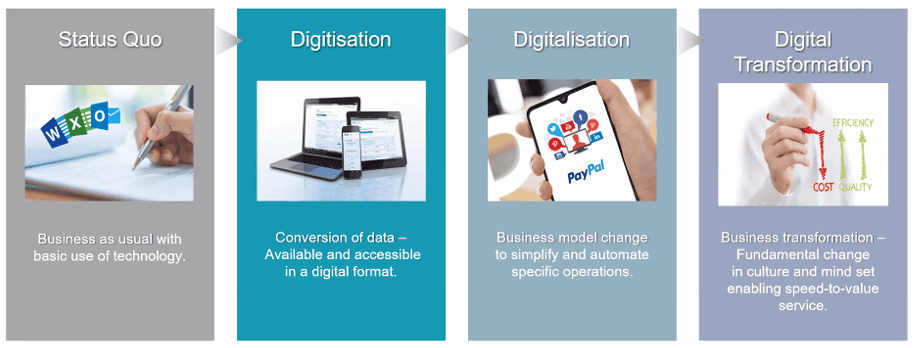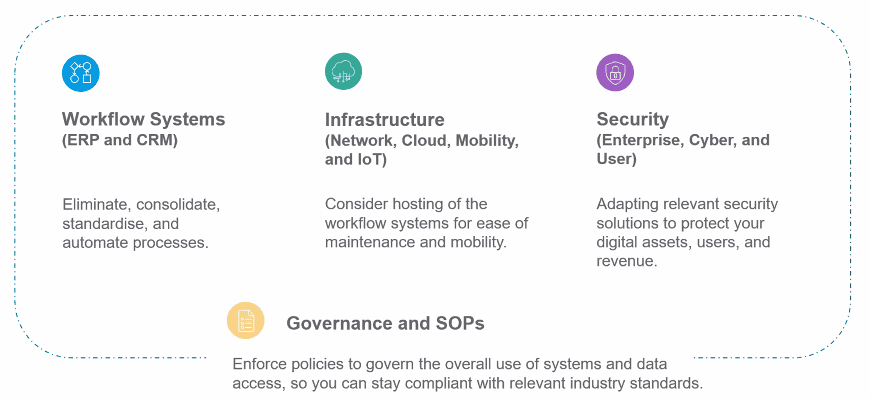“Successful digitalisation happens when you leverage technology to disrupt your current business model and transform your business.”
Eileen Tan, Executive Director, Technology Services, RSM Stone Forest
Most MNCs and SMEs are well acquainted with the entire process and know what it means to digitalise, but not every company has implemented it especially the smaller outfits. It is true that the entire digitalisation process is time consuming and may be deemed as costly. Companies can, however, take baby steps to embark on their digitalisation journeys.
Fundamentals of Digital Transformation
During the “Digitise and Win with ERP, CRM, and Agile Industrial IoT” webinar hosted by the Manufacturing Alliance Transformation Office (MATO) on October 14, Eileen Tan, Executive Director of RSM Stone Forest started off by revisiting the fundamentals of digital transformation:

Taking a step further, Eileen highlighted what it really means to digitalise – starting from eliminating work redundancy, automating work processes to protecting digital assets:

Develop a Digital Transformation Strategy – 3Ps
Any form of business transformation needs to be backed by a set of guiding principles to make it work. Eileen has, therefore, condensed the guiding principles of digital transformation into three key building blocks aptly named as the 3Ps of digital transformation:
- People
- Firms should deploy representatives from different departments who are familiar with the daily operations and the firm’s culture to participate in the digitalisation project. They must have the autonomy and confidence to make decisions on behalf of their departments or teams.
- Firms should include advisors, who may be your industry peers, in this project team.
- Firms should involve vendors who are leading practitioners from the technology domain. They must be able to advise and share market trends, and capable and reliable to resolve technical challenges. Most importantly, they must be able to tap on their networks to recommend suitable solutions and talents (if required).
- Platform
- First is accessibility. This refers to how one can access the system or data, or how to achieve greater ROIs with different software legacy models in the market; certain licensing models are subscription based depending on system requirements.
- It must be compliant. This means that the firm should select a technology compliance platform that meets localised requirements (PDPA, ISO27001, etc.), and statutory obligations (business, legal, and financial requirements).
- Finally, it must be secure. The firm must consider data (encryption, backup, and restoration) and user (end-point protection) security in a holistic manner. Firms should look into how data is being secured and make sure users access these data in a secure manner.
- Process
- Work flow, checklists, reports, security configuration matrixes, etc. should be standardised and kept consistent.
- Firms should maintain data integrity without data patching and data reconciliation, amongst different systems.
- Automation will eliminate work redundancy, combine steps, and simplify work processes.
To find our more and how we can assist you in your digitalisation journey, please reach out to our specialists.
Eileen Tan
Executive Director & Head, IT Services
EileenTanSC@stoneforest.com.sg
T +65 6594 7889